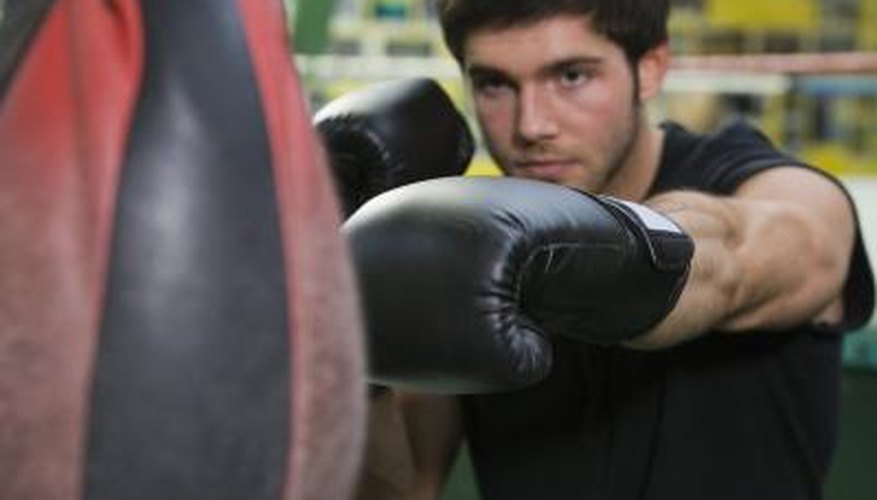The Boxing Punch Game is an arcade machine featuring a hanging speed bag or pad that is released when the player enters coins or tokens into the machine. To play the game, the puncher simply has to punch the mechanism as hard as he can. When punched, the bag is knocked back up into its tucked-away position, and the force of the punch that put it there is recorded and displayed as an electronic score. The key to performing well at the boxing punch game is learning how to throw a strong punch.
Stand with the foot that's on the same side of your body as your punching hand positioned farther from the bag than your other foot. Spread your feet slightly wider than your shoulders. Keep your feet nearly inline with the punchbag, so that a line from your back foot through your lead foot points slightly to the side of the bag opposite your punching hand. For example, a right-handed puncher would be standing so that her feet point just to the left of the bag.
- The Boxing Punch Game is an arcade machine featuring a hanging speed bag or pad that is released when the player enters coins or tokens into the machine.
- Keep your feet nearly inline with the punchbag, so that a line from your back foot through your lead foot points slightly to the side of the bag opposite your punching hand.
Keep your weight slightly forward of centre, with your back heel off the ground.
Keep both feet on the ground throughout the entire punch.
Turn your upper body toward the bag slightly. Your chest should not be pointed at the bag, nor should it be directly perpendicular to your feet.
- Keep your weight slightly forward of centre, with your back heel off the ground.
- Turn your upper body toward the bag slightly.
Turn your body toward the bag as you throw your punch, swivelling your feet forward and turning your hips and shoulders toward the bag.
Aim your punch for the centre of the bag for the best power transfer.
Drive your punch through the bag as hard as you can. When punching, it is best to imagine punching an object directly behind the target, not the target itself, to ensure that there is no let-up before impact.
